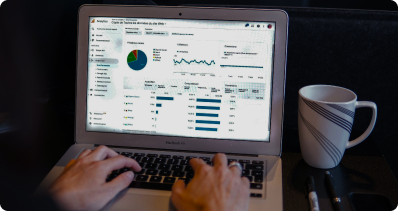Navigate
Data Analytics Tutorial for Beginners
Data Science Tutorial for Beginners
Statistics Tutorial for Beginners
Power BI Tutorial
Excel Tutorial for Beginners
Tableau Tutorial
Introduction to Data Analytics
Data Analytics is the process of examining data sets to draw conclusions about the information they contain. It involves collecting, processing, and analysing data to find patterns, trends, and insights. These insights can help businesses make informed decisions, identify opportunities, and improve operations.
Why is Data Analytics Important?
Informed Decision-Making
By analysing data, businesses can make better decisions based on evidence rather than intuition. For example, a company can analyse sales data to determine which products are the most popular and adjust their inventory accordingly.
Identifying Trends
Data analytics helps in identifying trends and patterns over time. For instance, a retailer can track seasonal sales trends to plan marketing strategies and stock inventory.
Efficiency
Data analytics can highlight areas where a company can improve efficiency, such as identifying bottlenecks in production or areas where resources are being wasted.
Problem Solving
By analysing data, businesses can identify and address problems more effectively. For example, analysing customer feedback can help a company improve its products or services.
Types of Data Analytics
1. Descriptive Analytics
This type answers the question, 'What happened?' It involves summarising historical data to understand changes or trends. For example, a report showing last month’s sales figures is descriptive analytics.
2. Diagnostic Analytics
This type answers the question, 'Why did it happen?' It involves drilling down into data to understand the causes of past performance. For instance, if sales dropped last month, diagnostic analytics might reveal that it was due to a competitor's promotion.
3. Predictive Analytics
This type answers the question, 'What could happen?' It uses historical data and statistical models to predict future outcomes. For example, predicting next quarter’s sales based on past trends.
4. Prescriptive Analytics
This type answers the question, 'What should we do about it?' It provides recommendations for actions based on data insights. For example, a recommendation engine that suggests products to customers based on their purchase history.
Example
Activity
Unlock Expert Career Advice For Free





